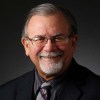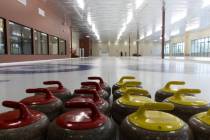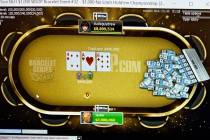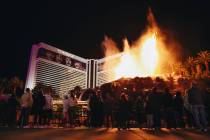Yabba-dabba-doo! UNLV prof’s airplane boarding system better than WILMA
WILMA is no longer just a cartoon character from “The Flintstones.”
In aviation circles, it’s shorthand for Windows, Middle and Aisle, United Airlines’s newly released passenger boarding system for flights on its single-aisle aircraft, mainly Boeing 737s, 757s and Airbus A320-type twin-engine jets.
United, the sixth-busiest commercial air carrier at Harry Reid International and one of the historic legacy airlines serving the Las Vegas market, has experimented with boarding procedures for years before finally determining that WILMA is the answer to getting planes fully loaded for departure an average two minutes faster than other boarding methods.
Meanwhile, Jason Steffen, an associate professor of physics at UNLV, has an even better boarding plan he says would speed up the process even more.
Steffen, who said in a recent interview that he became interested in airline boarding procedures in 2007, well before he took to UNLV’s classroom teaching students about exoplanets orbiting distant stars, looked into aircraft boarding when he became frustrated with all the lines he had to stand in at airports.
“I thought about it for a couple years,” Steffen said. “The main thing is it seemed like a tractable problem, like this seems like a problem that can be solved. But I didn’t jump into it because I thought it would take a long time to write the model, like to do all the computer programming that it would take for me to be satisfied with the result myself. But then I decided I either needed to solve the problem or stop thinking about it.”
Once Steffen developed the computer program for how to best board the plane, he tried it in real time with something similar to a movie set.
What he finally came up with is a variation of the WILMA plan United has adopted. But he said he knows his system would be even better than what United is doing.
Under United’s WILMA plan, the premium passengers — the first class and business class customers — still get to board first. United also makes allowances for families traveling together so that parents aren’t separated from their children.
In the plane’s economy class, passengers are then boarded from the back of the plane to the front with those holding window seats boarding first, followed by those sitting in middle seats followed by those sitting along the aisle.
Two minutes saved
United says that process speeds the boarding process by about two minutes per flight. While that doesn’t sound like much, in the big picture, it could be huge.
If departures can be sped up on every flight, there’s a greater opportunity for increasing aircraft use, possibly adding another flight and generating more revenue from the added availability of the plane.
Steffen, thinking more as a physics professor than an airline operations executive, said a twist on WILMA would be even more favorable.
He suggests that a plane also be filled from back to front with an important addition — alternating boarding rows in addition to loading windows-to-aisle.
For example, if the back row is Row 30, he would board the person seated in the window seat, 30A first, followed by the next even-numbered row (Seat 28A), then all of the even-numbered rows toward the front.
Then, he would load the right side of the plane the same way with Seat 30F first, then 28F, etc.
Next would be the odd-numbered rows (29A, then 27A, then 25A).
Steffen’s reasoning is solid. The boarding logjam occurs because there simply isn’t enough room for people to hoist a carry-on bag into the overhead bin across from each other in a single-aisle plane. That’s why the alternating rows would be beneficial, he said.
Steffen said the worst boarding scenario is when an airline simply loads from the back to the front. There isn’t enough room to get everyone seated if all seats in the back rows enter the plane at one time.
‘Cattle-call’ system
Steffen said even the so-called “cattle-call” boarding style used by Southwest Airlines is superior, he said, because most passengers know what they want and beeline for where they prefer to sit.
The backup on Southwest always seems to occur in the late loading stages when flight attendants warn that the plane is filling up and it’s wise to grab the first empty seat available. There always seems to be somebody thinking there’s an open seat on the aisle in the back of the plane and then have to backtrack to get to that open middle seat they passed.
Another boarding system that’s common on airlines is paid-in-advance assigned seating. Airlines get the benefit of generating additional revenue by charging passengers for the seat of their choice. It doesn’t speed up the boarding process, but it does add to an airline’s bottom line.
Other carriers are using zone seating plans that never seem to work as well as they’re modeled.
Some airline critics say they expect United eventually will abandon the WILMA system, as those with aisle seats may be unhappy that the aircraft has run out of bin space for carry-on bags (although United says its newly designed planes will have larger overhead bins to accommodate all carry-ons.)
Steffen is convinced that boarding processes will continue to evolve as airlines continually change seating arrangements, overhead bins and technology to better serve the flying public.
Perhaps someday an airline will adopt the Steffens method and passengers will be able to thank a UNLV prof for making the flying experience better.
Contact Richard N. Velotta at rvelotta@reviewjournal.com or 702-477-3893. Follow @RickVelotta on X.



















